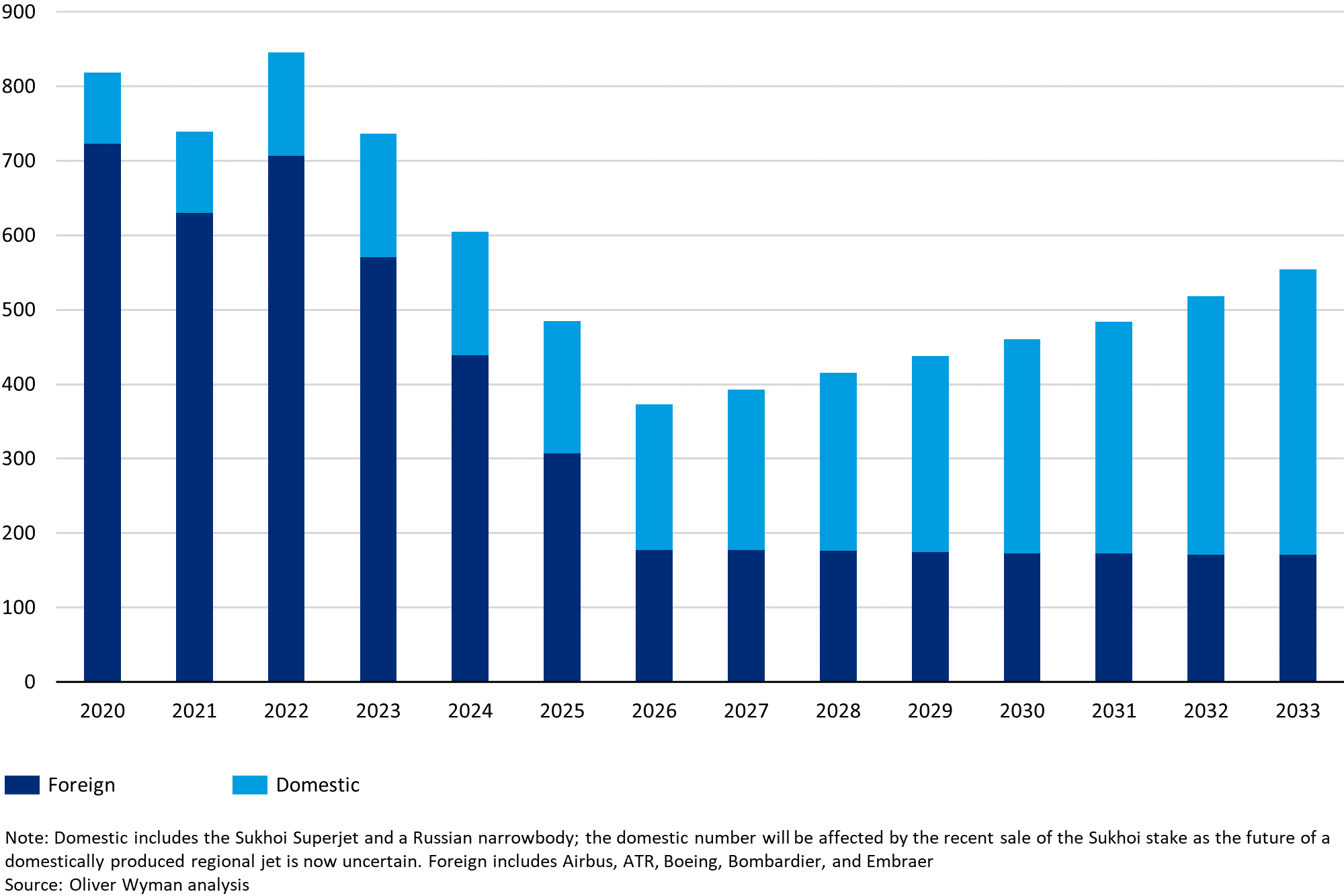The war in Ukraine and the subsequent sales prohibition against selling Russia Western-made aircraft and parts are taking a toll on the Russian commercial aviation industry. While Russia has been able to keep aircraft flying and people traveling so far— albeit almost entirely to domestic destinations — the nation’s commercial in-service fleet shrank 17% in 2022 year-over-year, with more to come this year and over the next 10.

The biggest decline was in the number of widebody aircraft, which decreased 48%. That drop was prompted by the loss of most international business after economic sanctions were imposed on Russia by the United States and other North Atlantic Treaty Organization (NATO) members after its invasion of Ukraine. By 2033, the Russian fleet will be 25% smaller than it was in January 2022 — a month before Russia’s attack, according to our analysis in the recently released Global Fleet and MRO Market Forecast 2023-2033.
Taking aircraft out of service is only part of the problem Russian airlines face; the other is keeping in-service jets flying. Unable to buy Western-manufactured equipment, Russian airlines — as early as July 2022 — had reportedly started to “cannibalize” aircraft in storage for replacement parts to support aircraft that were still in service. At the end of 2022, Rosaviatsia, the Federal Agency for Air Transport in Russia, gave permission to aircraft operators to use parts from cannibalized planes on the in-service fleet, another indication that the harvesting of parts had started. While some gray-market parts are probably making it through via countries still doing business with Russia, it’s more likely that Russia is able to keep flying at this point because its airlines are literally flying fewer aircraft less. Based on analysis from the Global Fleet Forecast, Russia’s fleet is flying almost 28% fewer hours and cycles compared with 2019, and to state the obvious, the less an aircraft is flown, the lower its maintenance requirements.
Read the full article, here.